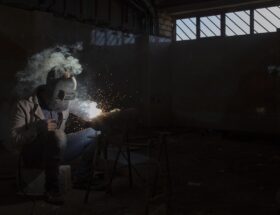# The Mystery Behind Robert F. Kennedy Jr.’s Raspy Voice: Understanding Spasmodic Dysphonia #
As the son of the late Senator Robert F. Kennedy, Robert F. Kennedy Jr. has long been a prominent figure in American politics and environmental activism. However, many people may be curious about the unique quality of his voice – a raspy, strained sound that is characteristic of a condition known as spasmodic dysphonia. Let’s delve into the intricacies of spasmodic dysphonia, its symptoms, causes, and treatment options, as well as how it has impacted Kennedy’s public persona.
Spasmodic Dysphonia
Spasmodic dysphonia is a neurological disorder that affects the muscles of the larynx, or voice box. This condition leads to involuntary spasms in the vocal cords, resulting in a strained, hoarse, or shaky voice quality. People with spasmodic dysphonia may experience difficulties speaking, as their voice may suddenly fail or become unsteady during conversation. The exact cause of spasmodic dysphonia is not fully understood, but it is believed to be related to abnormal brain signals that control the muscles responsible for vocalization.
What are the Symptoms of Spasmodic Dysphonia?
– Strained or shaky voice quality
– Hoarseness or raspiness
– Voice breaks or interruptions
– Difficulty speaking loudly or projecting
– Voice fatigue after prolonged use
What Causes Spasmodic Dysphonia?
While the exact cause of spasmodic dysphonia remains unknown, researchers believe that it may be related to a combination of genetic, neurological, and environmental factors. Some studies suggest that there may be a genetic predisposition to spasmodic dysphonia, as it tends to run in families. Additionally, abnormalities in the brain’s communication pathways that control the laryngeal muscles may contribute to the development of this condition. Environmental factors, such as vocal strain or stress, may also trigger spasms in the vocal cords.
How is Spasmodic Dysphonia Treated?
Unfortunately, there is no cure for spasmodic dysphonia, but there are several treatment options available to help manage its symptoms. The most common treatment for spasmodic dysphonia is botulinum toxin injections, which work by temporarily paralyzing the muscles that cause the vocal cord spasms. These injections can provide relief from symptoms for several months before needing to be repeated. Speech therapy may also be beneficial for individuals with spasmodic dysphonia, as it can help improve vocal control and reduce strain on the vocal cords.
The Impact on Robert F. Kennedy Jr.
Robert F. Kennedy Jr.’s distinctive voice, affected by spasmodic dysphonia, has become a recognizable trait that many associate with him. Despite the challenges posed by this condition, Kennedy has continued to speak out on important issues and advocate for environmental causes. His resilience in the face of spasmodic dysphonia serves as a reminder that individuals with voice disorders can still make a powerful impact through their words and actions.
FAQs
Can spasmodic dysphonia be cured?
Unfortunately, there is currently no cure for spasmodic dysphonia. Treatment options such as botulinum toxin injections and speech therapy can help manage its symptoms, but the condition is considered chronic.
Is spasmodic dysphonia a common condition?
Spasmodic dysphonia is considered a rare disorder, affecting an estimated 1 in 100,000 people. It is more common in women than men and typically develops in adulthood.
How does spasmodic dysphonia impact daily life?
Spasmodic dysphonia can have a significant impact on an individual’s daily life, causing difficulties in communication, social interactions, and professional settings. The strain on the vocal cords can lead to voice fatigue and discomfort during speaking, making it challenging to carry out everyday tasks.
# Conclusion #
In , spasmodic dysphonia is a complex neurological disorder that can have a profound impact on an individual’s voice quality and communication abilities. Understanding the symptoms, causes, and treatment options for this condition is essential for those affected by it, as well as for raising awareness and promoting acceptance and support in the community. Through education and advocacy, we can help individuals like Robert F. Kennedy Jr. navigate the challenges of spasmodic dysphonia and continue to have their voices heard.[4]
Enhance Your Hiking Experience with an All-Terrain Exoskeleton

